- News
- Reviews
- Bikes
- Accessories
- Accessories - misc
- Computer mounts
- Bags
- Bar ends
- Bike bags & cases
- Bottle cages
- Bottles
- Cameras
- Car racks
- Child seats
- Computers
- Glasses
- GPS units
- Helmets
- Lights - front
- Lights - rear
- Lights - sets
- Locks
- Mirrors
- Mudguards
- Racks
- Pumps & CO2 inflators
- Puncture kits
- Reflectives
- Smart watches
- Stands and racks
- Trailers
- Clothing
- Components
- Bar tape & grips
- Bottom brackets
- Brake & gear cables
- Brake & STI levers
- Brake pads & spares
- Brakes
- Cassettes & freewheels
- Chains
- Chainsets & chainrings
- Derailleurs - front
- Derailleurs - rear
- Forks
- Gear levers & shifters
- Groupsets
- Handlebars & extensions
- Headsets
- Hubs
- Inner tubes
- Pedals
- Quick releases & skewers
- Saddles
- Seatposts
- Stems
- Wheels
- Tyres
- Health, fitness and nutrition
- Tools and workshop
- Miscellaneous
- Cross country mountain bikes
- Tubeless valves
- Buyers Guides
- Features
- Forum
- Recommends
- Podcast
TECH NEWS
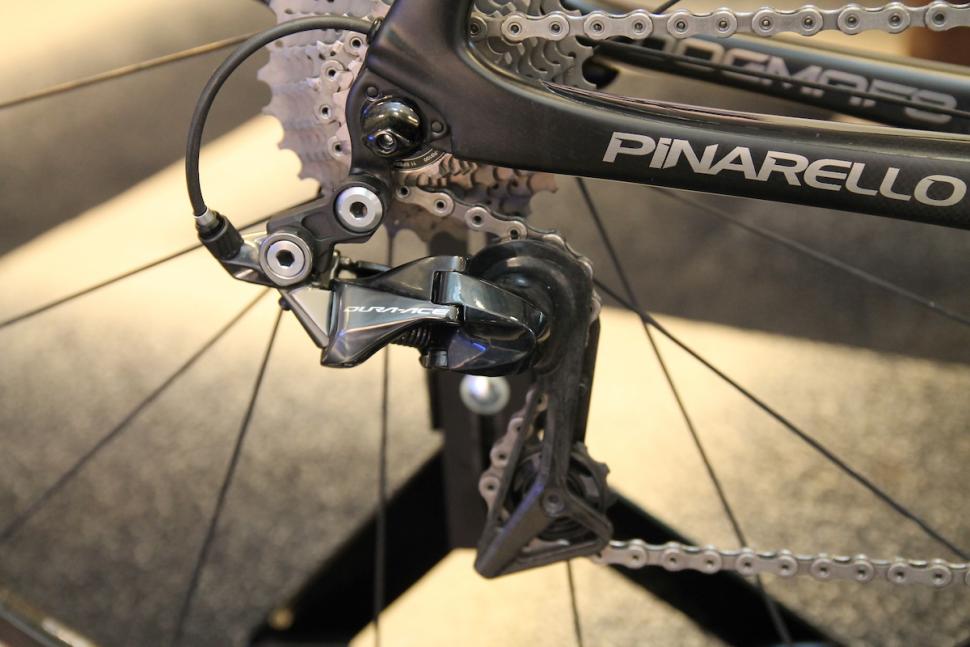 shimano dura-ace r9100 groupset 2017 10.JPG
shimano dura-ace r9100 groupset 2017 10.JPGNew Shimano Dura-Ace R9100: 5 key innovations
Shimano has just launched Dura-Ace R9100, the latest version of its top-level road groupset, and it's packed with new and evolved technology.
We've covered the details in our other story on road.cc but if you're after just the highlights, here you go.
1. Synchronized Shift
Synchronized Shift, a technology borrowed from mountain biking, is new to Shimano’s electronic road groupsets.
It’s “designed to simplify gear choice and reduce decision making in racing situations.” The idea is that you press a button that moves you to the next gear ratio (up or down) irrespective of whether a gear change needs to be made by the front or rear derailleur.
There are two modes. If you go for the Full Shimano Sychronized Shift, the front derailleur reacts based on the rear derailleur’s shift action. You don’t need to use two separate shifters, you just use one. Press one button and the gear will get harder to turn, press the other button and the gear will get easier. If that requires a front shift, the system will take care of that automatically; you don’t need to worry about it.
If you go for Semi Shimano Synchronized Shift mode: the rear derailleur reacts based on the front derailleur’s shift action, shifting to the next most appropriate rear gear when the rider makes a front shift.
Okay, you don’t need it, but Shimano’s reasoning is that, “When riding at maximum capacity, decision making can be impaired. The less stresses on a rider and the less decisions a rider has to make, the less mistakes they will make.”
It’s hard to argue with that. Most of us have made strange decisions when going full gas. It’s certainly an interesting innovation.
Shimano sees it as particularly useful for time trials and triathlons. Reducing the number of buttons – there’s just one per bar end shifter and base bar brake lever – allows levers to be slimmed from 40mm wide to 29mm, and the weight to be reduced from 128g to 100g.
2. New power meter
It has been obvious for a few years – quite a lot, actually – that a big tech component brand like Shimano needs a power meter in its range, especially given that SRAM already has its Quarq power meters. The new FC-R9100-P power meter plugs a huge gap. As well as providing for consumers, it will presumably allow Shimano to get its sponsored riders on an in-house device. It’ll be interesting to see how many of the World Tour teams will be using it next year.
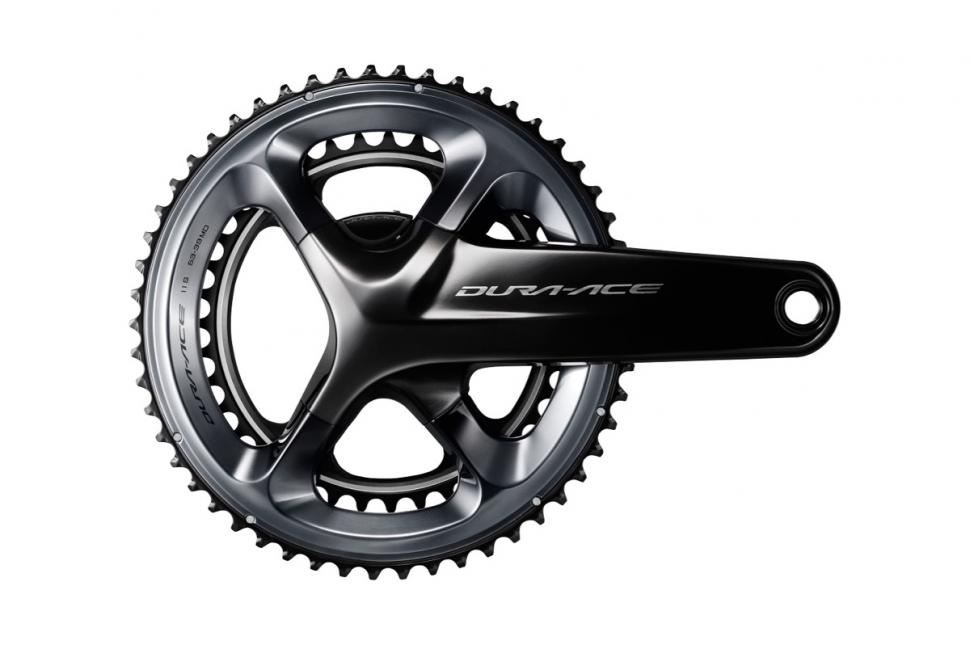 Shimano’s power meter is crank based with strain gauges in both crank arms – so it can measure left and right legs separately – and a discreet ‘brain’ that sits within the spider. See it up there (above) between the top two arms? I told you it was discreet!
Shimano’s power meter is crank based with strain gauges in both crank arms – so it can measure left and right legs separately – and a discreet ‘brain’ that sits within the spider. See it up there (above) between the top two arms? I told you it was discreet!
It can be paired to third party displays, such as Garmin Edge bike computers. The system checking and firmware upload can be operated by your smart phone or tablet PC through a Bluetooth connection.
We’ve not used the power meter but it would be a massive surprise if Shimano has come up with something that doesn’t bother the opposition. We’re not saying the Japanese brand is infallible – check out Shimano and Campagnolo’s greatest design blunders – but it doesn’t make many mistakes as far as technology is concerned.
3. New wheel depths
Shimano has introduced two new rim depths to its Dura-Ace lineup. You could previously choose from 24mm, 35mm and 50mm rims. The 24mm rims remain but Shimano has now brought in 60mm and 40mm rims (they’re the same width so no brake adjustment is required if you swap from one to the other).
“Two new 28mm wide C60 and C40 rim platforms bring a stiffer wheel to enhance forward and side-to-side (lateral) power transfer and, with ultra-light carbon rim heights of 60mm and 40mm, are also designed to reduce air resistance,” says Shimano.
Could we be about to see a move towards slightly deeper wheels, both in the pro peloton and the wider world? Perhaps. It wasn’t so long ago that deep section wheels were solely the preserve of time trialists. Now they’re everywhere. Maybe we’re going to move a little further along that road.
4. The introduction of hydraulic braking
Yes, Shimano has offered hydraulic braking on the road alongside both mechanical and electronic shifting for a while now, but the brakes have previously been non-series – they’ve sat outside the groupset structure.
Now Shimano is offering Dura-Ace hydraulic road disc brakes for the first time, probably in recognition of the fact that discs have been permitted in road racing (albeit that their use is suspended at the moment), and Dura-Ace is essentially a racing groupset.
Shimano hasn’t simply rebranded it’s existing disc brake callipers. It says that while its previous road disc brakes were essentially modified mountain bike brakes, the new Dura-Ace disc brakes are proper road bike brakes.
Shimano says, “New dedicated Dura-Ace rotors bring better heat management properties to provide stability in brake performance. With an increased adaptor size, heat transfer through the rotor is decreased and more heat can dissipate through the air. This results in a 30°C reduction in rotor temperature over Shimano’s Ice Technologies Freeza rotors.”
The inclusion of disc brakes within the Dura-Ace groupset for the first time is an indication of their widespread acceptance in the road cycling world, notwithstanding the UCI’s suspension, and a signal, if one was needed, that they’re here to stay on performance road bikes.
5. The 30 tooth sprocket
The smallest sprocket size offered on previous versions of Dura-Ace was 28-tooth but now Shimano is offering an 11-30-tooth cassette.
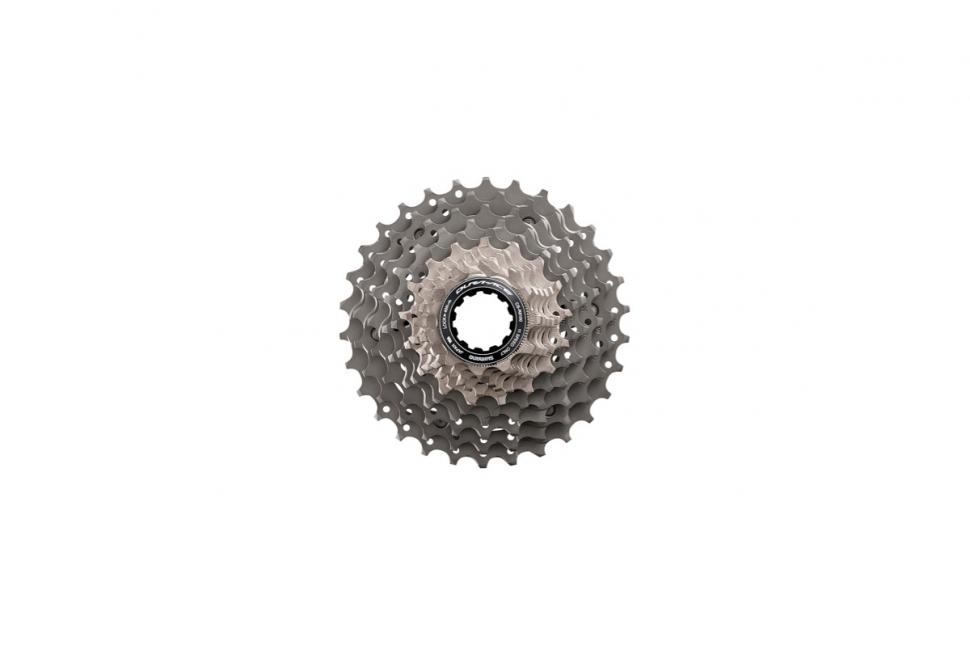
All of the major manufacturers offer wider ranging cassettes these days. Even Campagnolo now has an 11-32 cassette in its new Potenza range.
Check out Campagnolo Potenza here.
Dura-Ace remains a racing groupset but it’s interesting that there’s a recognition that a proportion of the public want smaller gears.
Shimano says that cycling has evolved and people now do more extreme riding, hence the need for smaller gears.
The new direct mount rear derailleur comes in one size for all chainring/cassette options. There’s no such thing as short/medium/long cage rear mechs in the Dura-Ace R9100 groupset. That has to be good news for those who like to swap cassettes/wheels for different terrains.
Mat has been in cycling media since 1996, on titles including BikeRadar, Total Bike, Total Mountain Bike, What Mountain Bike and Mountain Biking UK, and he has been editor of 220 Triathlon and Cycling Plus. Mat has been road.cc technical editor for over a decade, testing bikes, fettling the latest kit, and trying out the most up-to-the-minute clothing. He has won his category in Ironman UK 70.3 and finished on the podium in both marathons he has run. Mat is a Cambridge graduate who did a post-grad in magazine journalism, and he is a winner of the Cycling Media Award for Specialist Online Writer. Now over 50, he's riding road and gravel bikes most days for fun and fitness rather than training for competitions.
Latest Comments
- chrisonabike 13 min 48 sec ago
I've no insider knowledge but I believe there are a lot of costs in the business, vs a fairly low limit that sufficient people are prepared to pay...
- Bmblbzzz 29 min ago
Yesterday (but after my previous comments, otherwise I'd have mentioned it then) I read that EBLN is the Cable's most active topic. They've had ...
- OldRidgeback 31 min 4 sec ago
Yes indeed, that's a great suggestion! But he should drill the battery holes longitudinally instead of crosswise, to maximise aerodynamic efficiency.
- tony.westclassics@live.co.uk 42 min 11 sec ago
Thats OK then, but wont be able to watch unless paying a forfune £30.99 a month, at 81 and on small pension thats un realistic
- Rendel Harris 1 hour 13 min ago
Several times recently I've come across drivers having to back out of roads and take an alternative route because either their cars wouldn't...
- mdavidford 1 hour 51 min ago
To be fair, they didn't claim that it was a picture of the Daytripper Pack - the caption clearly says it's the Seat Pack.
- RoubaixCube 10 min 34 sec ago
I dont know what Conti were thinking with that price. But I can often find GP5000's for the same price or as low as £43 for the TR versions ...
- NPlus1Bikelights 11 hours 31 min ago
I think buying anything off Covert Instruments would equate to going equipped over here.
- Doctor Fegg 13 hours 49 min ago
Ah, British Cycling and the UCI. It's hard to think of two more universally beloved organisations. Thames Water and the National Rifle Association...
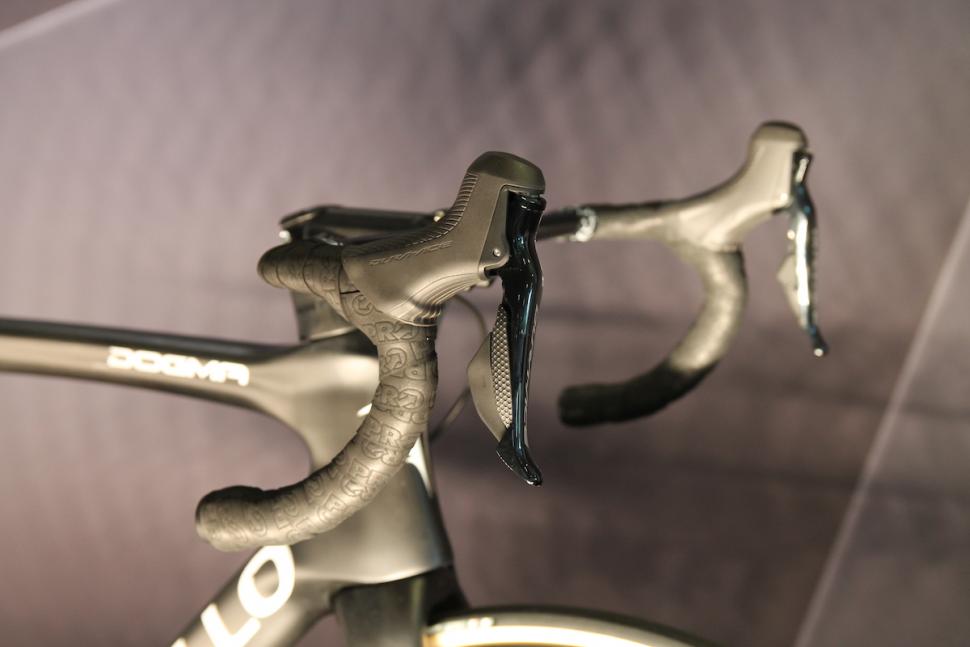


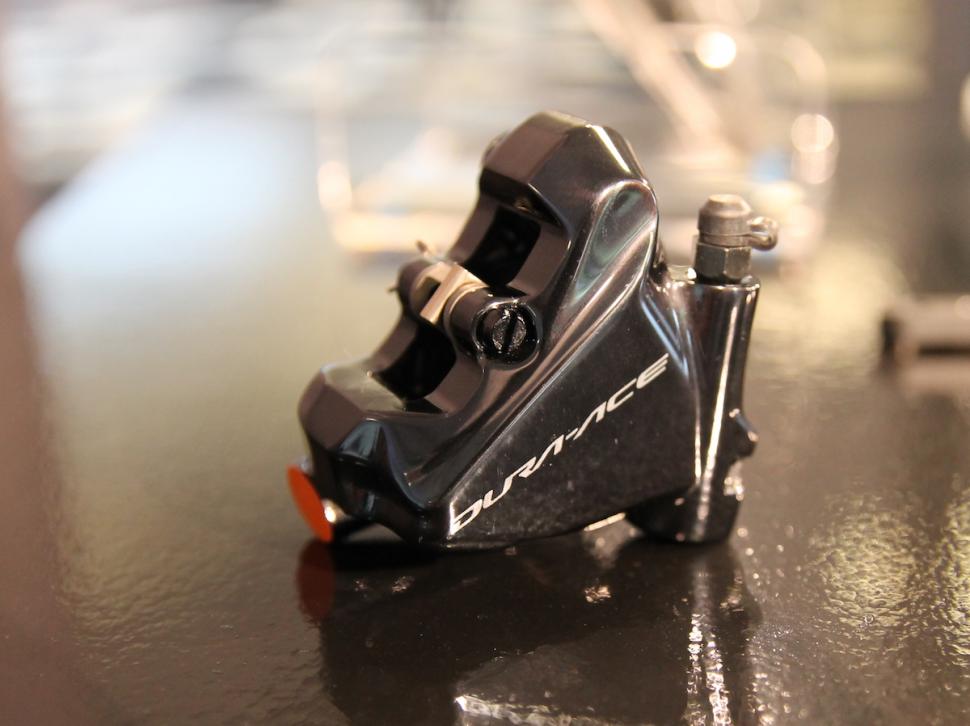
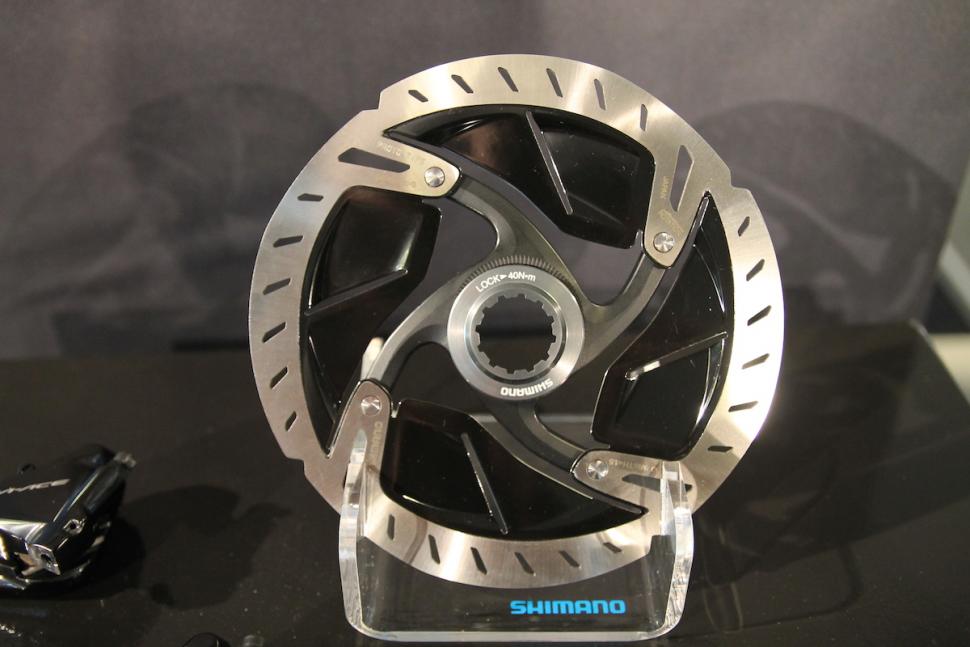
Add new comment
15 comments
I'm going to have a wee guess that the people commenting here and elsewhere about how the rear mech is some sort of homage to Campagnolo are predominantly roadies.
That crank though.... not quite to my taste but at least its mother loves it. Probably.
The crank looks much more like the Campag carbon crank. Chunkier.
And the rear mech outer link now hinges over the two ends, like Campag.
Of course, Campag's crank also looked very like the Shimano 4-arm crank, so they're both 'learning' from each other, as with Campag's Ergopower shifters that 'learnt' from Shim's STI.
Convergent evolution, perhaps?
Well two things:
1. On the cranks. What length are they? I'm hoping you say 167.5, because normal (say 172.5) might look a bit better.
2. The black finish is better, but still not as nice as Campy's.
I was waiting for this and think prima facie SRAM eTap still the way to go. Hopefully my LBS will have it soon for a side by side test.
Is it known whether the Synchronised Shift is purely a software tweak or does it rely on the new hardware designs?
If the former will it be available on previous Di2 revisions?
Seems like it's just down to firmware - doesn't seem like it requires anything exotic hardware-wise.
It's still up to Shimano if they'll offer Synchro Shift on older Di2 derailleurs though.
30T inner ring? That'll be a CX special or a triple, never seen a road chainset with 30T on the inside.
Most compacts that i've seen have a 34T inner not 30.
30t Sprocket. The text goes on to clarify the cassette being an 11-30. Is it just me who finds it somewhat disappointing when chaps go to the hassle of commenting and yet all they can add is a correction of minor grammar?
minor grammatical errors
If we're being pedantic...
"Fewer" not "less" most of the time in
I can't alter that; it's a quote from Shimano. The brand will just have to try to live with it!
Just noticed the power meter now.
Okay, wasn't bothered before but now I'm drooling. Praying this chainset/power meter is compatible with the older mechanical 9000 and isn't hideously expensive..
Discreet not discrete. </that guy>
Depends whether the author meant discrete as in separate or discreet as in unobtrusive.
Regarding the groupset, it may be a technological marvel, but it looks like Sora.
Of course.